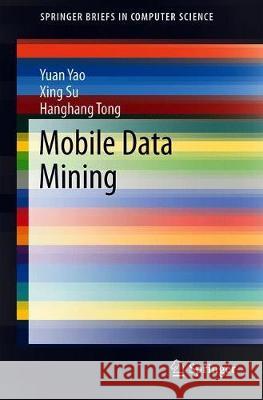Mobile Data Mining » książka
Mobile Data Mining
ISBN-13: 9783030021009 / Angielski / Miękka / 2018 / 58 str.
This SpringerBrief presents a typical life-cycle of mobile data mining applications, including:data capturing and processing which determines what data to collect, how to collect these data, and how to reduce the noise in the data based on smartphone sensorsfeature engineering which extracts and selects features to serve as the input of algorithms based on the collected and processed datamodel and algorithm design In particular, this brief concentrates on the model and algorithm design aspect, and explains three challenging requirements of mobile data mining applications: energy-saving, personalization, and real-timeEnergy saving is a fundamental requirement of mobile applications, due to the limited battery capacity of smartphones. The authors explore the existing practices in the methodology level (e.g. by designing hierarchical models) for saving energy. Another fundamental requirement of mobile applications is personalization. Most of the existing methods tend to train generic models for all users, but the authors provide existing personalized treatments for mobile applications, as the behaviors may differ greatly from one user to another in many mobile applications. The third requirement is real-time. That is, the mobile application should return responses in a real-time manner, meanwhile balancing effectiveness and efficiency.This SpringerBrief targets data mining and machine learning researchers and practitioners working in these related fields. Advanced level students studying computer science and electrical engineering will also find this brief useful as a study guide.











